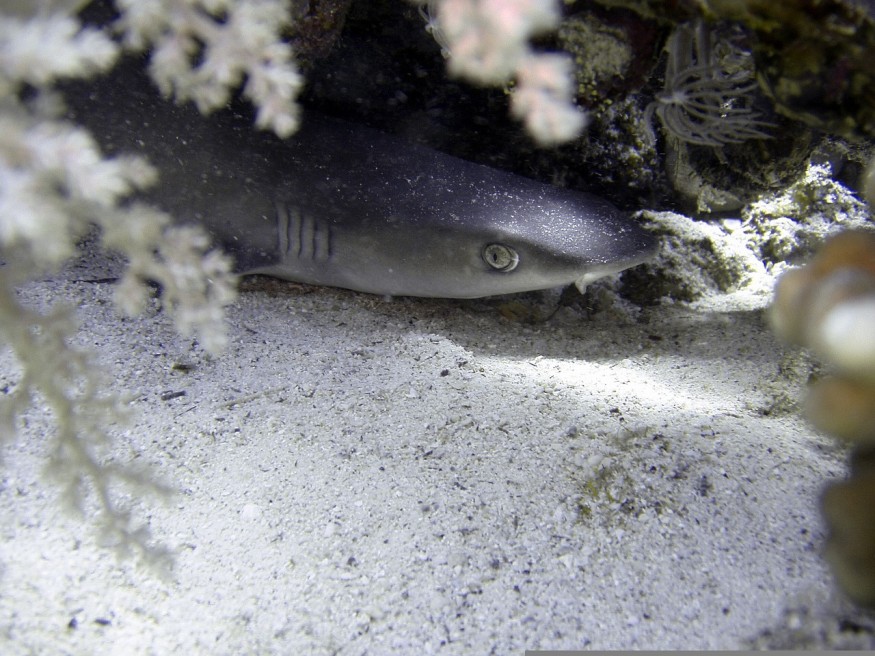Deep sea creatures are rarely seen on the surface, and seeing them usually shocks people. In Australia, a fisherman shared on September 12 via Facebook a photo of a rare deep-sea shark that commenters described as the "stuff of nightmares."
The image was shared on Monday and since then has become viral online. More so, the unusual find sparked comments of sheer fear and some humor toward the deep-sea creature. Some even commented that with all the bizarre creatures in the deep sea, it looks like another planet.

What is This Mystery Shark Caught Recently in Australia?
Trapman Bermagui, a Sydney-based fisherman, posted the photo of the deep sea shark on his Facebook account with a caption: The face of a deep sea rough skin shark." He caught the fish underwater at a depth of 2,133 feet (650 meters).
As seen in the photo, the shark has distinctive rough-looking skin, a pointed nose, large eyes, and a bulging set of sharp teeth. Commenters think it could be a cookie-cutter shark, a small cigar-shaped shark species with a bulbous snout and cookie-cutter-like teeth.
But Trapman Bermagui told Newsweek that he disagreed with the comments. He thinks it is a roughskin shark, the endeavor dog shark. He explained that these sharks are commonly found in the deep sea 600 meters below the surface and are usually caught in wintertime.
Florida State University Coastal and Marine Laboratory associate director Dean Grubbs told Newsweek that the species appears to be a roughskin dogfish (Centroscymnus owstoni).
Compared to the photo, Grubbs said that the ones they caught were from depths of approximately 2,400 to 3,800 feet (740 to 1,160 meters). These sharks are from the family of Somniosidae, which are the same as Greenland sharks, although they are smaller.
But Professor Christopher Lowe from California State University Long Beach Shark Lab said that the shark in the photo looks like the deepwater kitefin shark commonly found in Australia. A photo on the Shark Research Institute's website is similar to Trapman Bermagui's photo.
However, nothing has been confirmed yet. Nonetheless, the striking photo shows that the sea holds more mystery and is comparable to another planet.
Identifying Sharks
According to the Smithsonian Ocean, all sharks have similar anatomy no matter their size. They have cartilage skeletons, a defining feature of elasmobranchs that includes rays and skates. Cartilage is hard but lighter than bone, allowing sharks to stay afloat and swim long distances using less energy.
Moreover, sharks have several rows of teeth lining their jaws, constantly shedding as they lose and replace thousands of teeth in their lifetime. They use their razor-sharp teeth to bite off chunks of their prey's flesh, giving them the ability to attack larger animals. But some sharks with flatter teeth usually eat shellfish, while there are also filter-feeding sharks that eat plankton.
Another defining characteristic of sharks is their gill slits on each side of their bodies. Most of them have five slits on both sides that open individually after the water flows into the shark's mouth and goes to the internal gills, where oxygen is extracted from seawater. Then water is expelled through the slits behind its head.
When at rest, these slits pump water over the gills to ensure the oxygen never stops flowing. This mechanism is called buccal pumping and is common in sharks who spend their time sitting still on the seafloor, such as nurse sharks. But some shark species cannot do this, and if they stop pushing water into their mouths through swimming, they could suffocate, like the great white shark.
RELATED ARTICLE : Sharks Sleep Too But With Both Eyes Open, Contrary to Their Reputation of Being Always on the Move
Check out more news and information on Sharks in Science Times.











